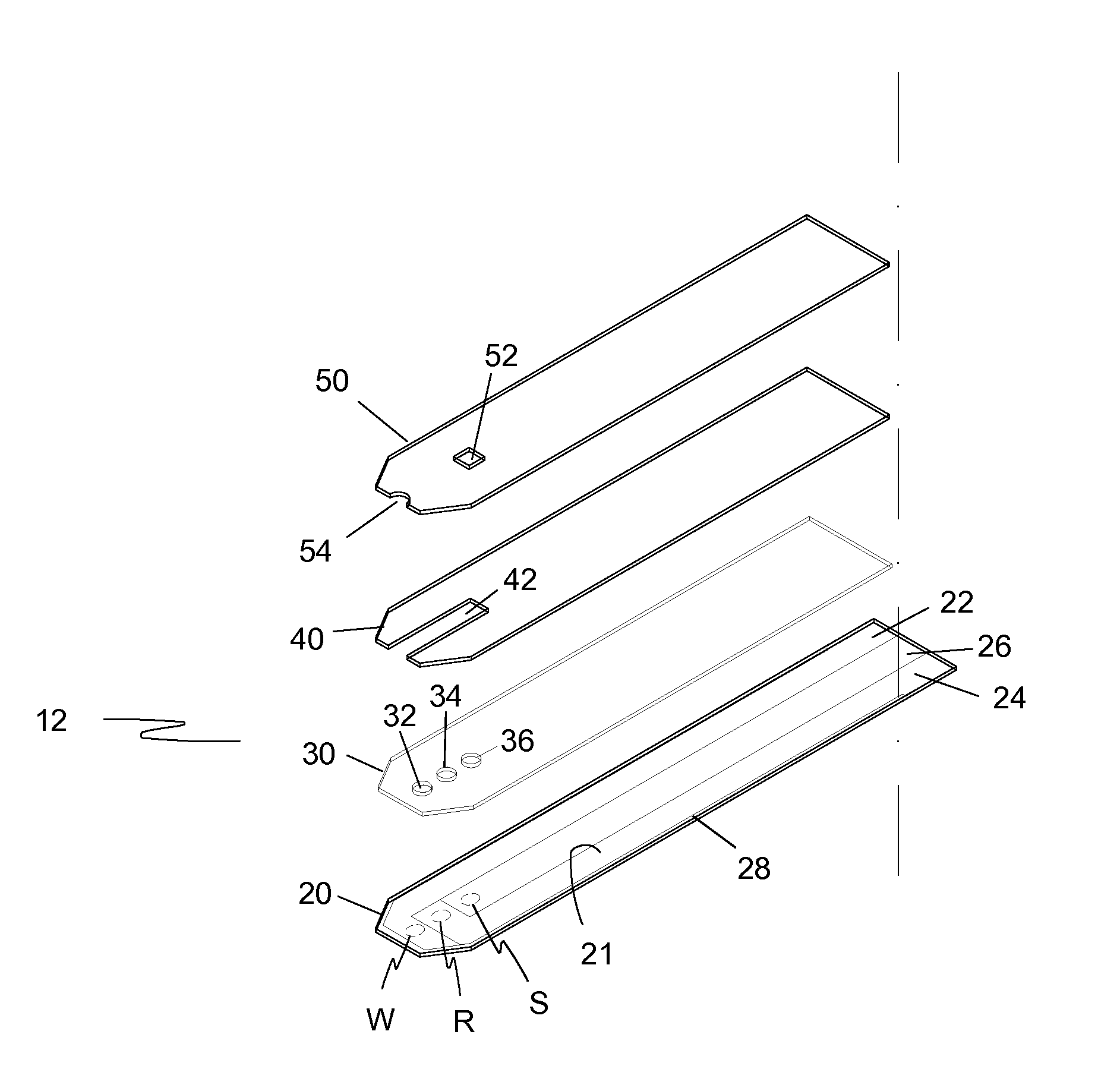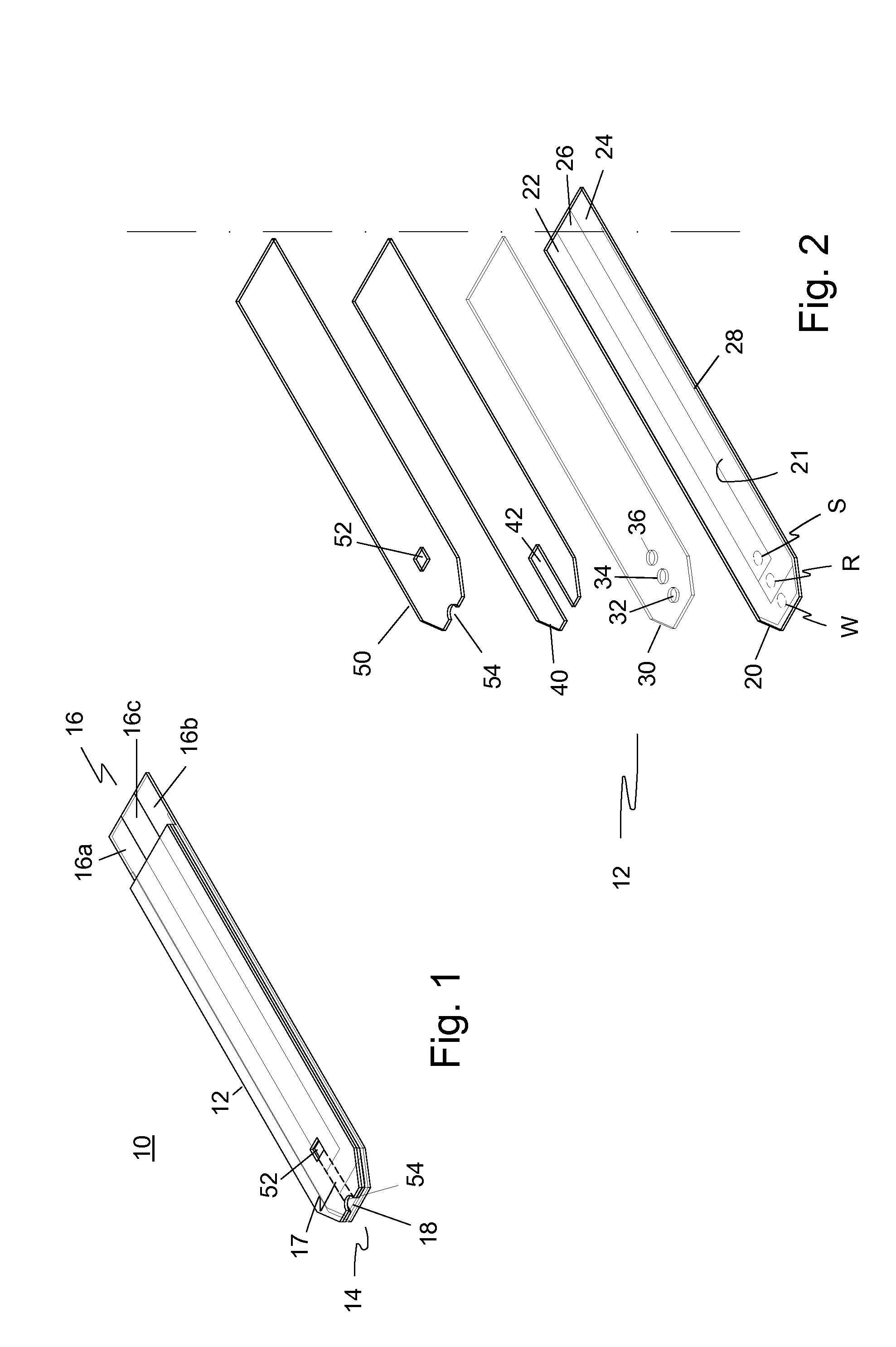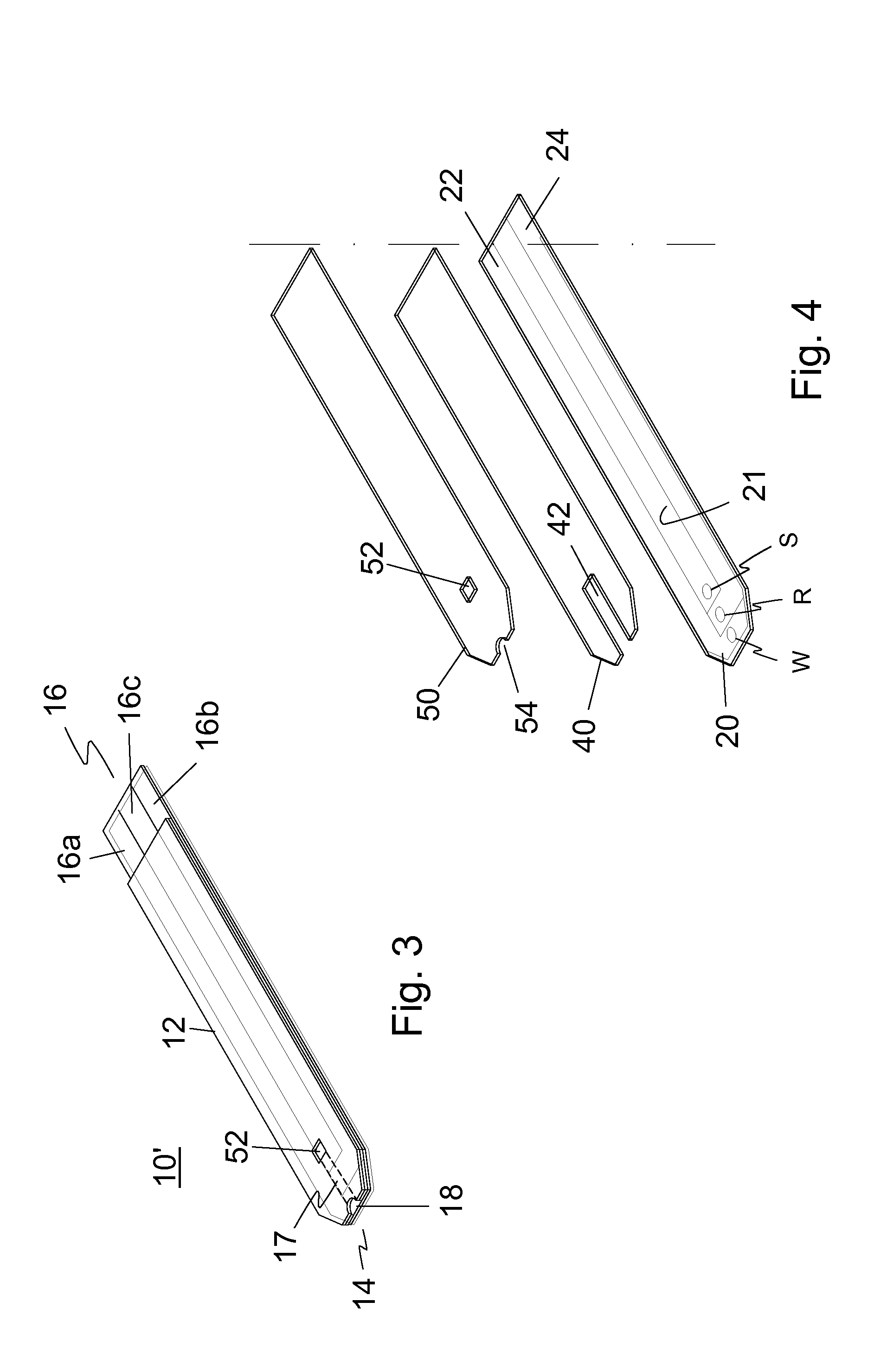Glucose biosensor with improved shelf life
a biosensor and glucose technology, applied in the field of electrochemical sensors, can solve the problems of deterioration of biosensor performance, decrease of current, and long term stability of biosensors, and achieve the effects of improving long term storage stability
- Summary
- Abstract
- Description
- Claims
- Application Information
AI Technical Summary
Benefits of technology
Problems solved by technology
Method used
Image
Examples
example 1
[0109]Biosensor stability was compared between biosensors with reagent layer compositions of the present invention incorporating different reagent solutions. The reagent layer compositions were disposed on gold electrodes formed on an insulating substrate. The biosensor with a reagent layer composition containing a citrate reagent is referred as sensor #1, a biosensor with a reagent layer composition containing a phosphate reagent is referred as sensor #2, and a biosensor with a reagent layer composition containing tris reagent is referred as sensor #3. The glucose biosensor vials containing a plurality of the above-described biosensors were left continually open to the room environment, which included a temperature of 25° C. and relative humidity of 50%. The biosensors' performance was checked using a glucose meter at the time intervals disclosed in Table 1 and measuring a glucose-containing control solution. The results are shown in Table 1.
TABLE 1A0 3 7 14 21 28 35 Timedaydaysday...
example 2
[0113]In this example, a plurality of biosensors was made using different noble metals as the conductive electrode. This comparison was performed to determine if the type of noble metal used would also produce an unexpected result since all biosensor disclosures indicate that any noble metal may be used such as gold, platinum, palladium and the like as the underlying conductive electrode with no mention of any operational differences and / or advantages of one over the other. Again, the test involved exposing the biosensors to an extreme temperature.
[0114]The plurality of glucose biosensors containing tris reagent in the reagent layer composition on a palladium substrate is referred to as Sensor #4 and the plurality of glucose biosensors containing tris reagent in the reagent layer composition on a gold substrate is referred to as Sensor #5. Tris reagent was used in the reagent layer composition in this example since the biosensors whose reagent layer composition containing tris reage...
example 3
[0116]In this example, various biosensors using the palladium substrate were made. One plurality of biosensors contained tris reagent in the reagent layer composition. Another plurality of biosensors contained phosphate reagent in the reagent layer composition. A third plurality of biosensors contained citrate reagent in the reagent layer composition.
[0117]Sensor #6 has the same composition as Sensor #4 in Example 2 above, which is a reagent layer composition containing tris reagent on a palladium substrate. Sensor #7 is a biosensor with a reagent layer composition containing phosphate reagent on a palladium substrate and Sensor #8 is a biosensor with a reagent layer composition containing citrate reagent on a palladium substrate. All biosensors of Sensor #6, Sensor #7 and Sensor #8 were exposed to room temperature environment (temperature of 25° C. and relative humidity of 50%). The biosensors' performance was tested at intervals of one month, two months, three months, four months,...
PUM
| Property | Measurement | Unit |
|---|---|---|
| Time | aaaaa | aaaaa |
| Time | aaaaa | aaaaa |
| Time | aaaaa | aaaaa |
Abstract
Description
Claims
Application Information
 Login to View More
Login to View More - R&D
- Intellectual Property
- Life Sciences
- Materials
- Tech Scout
- Unparalleled Data Quality
- Higher Quality Content
- 60% Fewer Hallucinations
Browse by: Latest US Patents, China's latest patents, Technical Efficacy Thesaurus, Application Domain, Technology Topic, Popular Technical Reports.
© 2025 PatSnap. All rights reserved.Legal|Privacy policy|Modern Slavery Act Transparency Statement|Sitemap|About US| Contact US: help@patsnap.com



